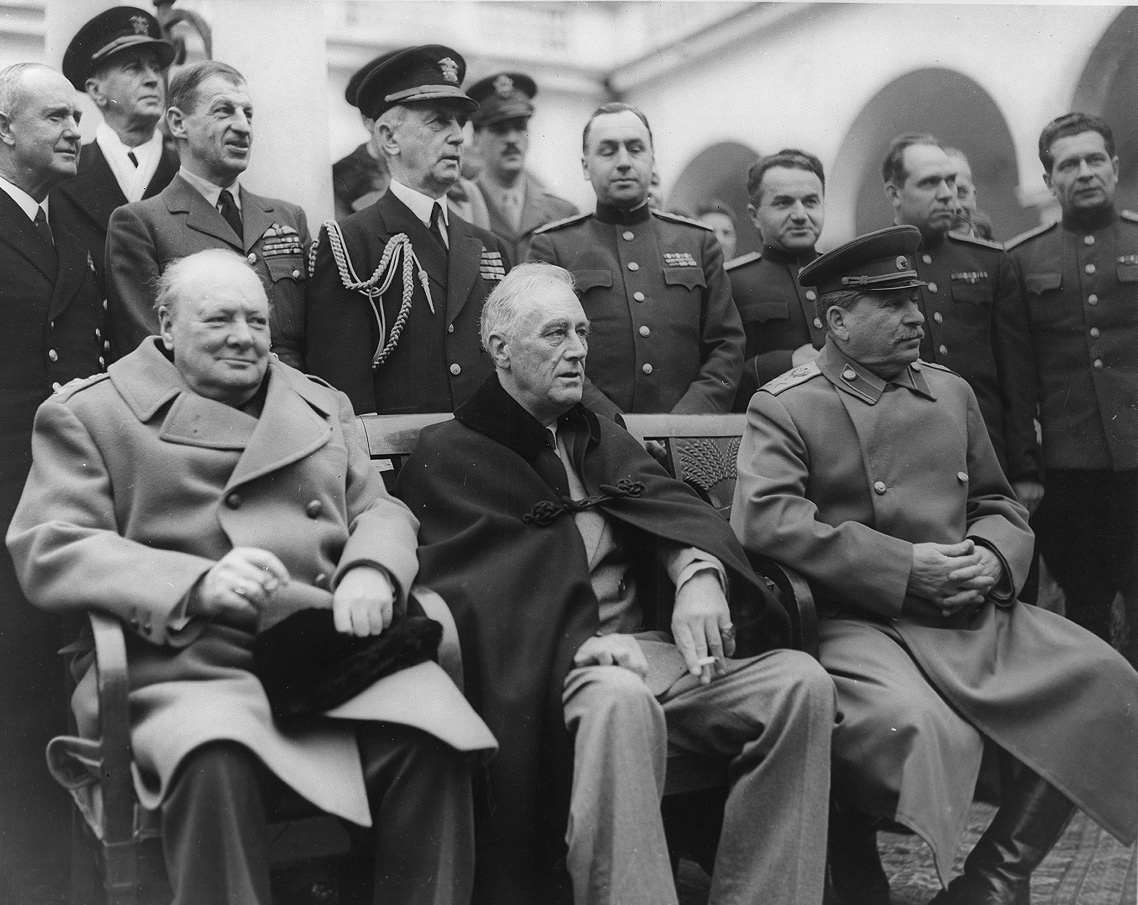True leaders lead whether they've been given an official position of power or not.
On our Leadership Training Course, you'll learn that it takes more than just a title to be a leader; it takes courage, passion, empathy, confidence and a whole lot more.
Being able to lead effectively when you're not a designated leader is tough.
It's a fine line to tread between being helpful and being arrogant or egotistical, and this is especially the case with how your boss or superior will react to you taking some of the reigns.

With that in mind, I thought we'd take a look at how to lead upwards, without encroaching on your manager's territory.
This is the sort of advanced people management skill that will really give your career a boost in the long-term.
Understanding Yourself
Analyse your skills
If you're aware of where your strengths and weaknesses lie, you'll be better equipped to deal with others, and dealing with others is the fundamental goal of leadership.
Is communication something you're comfortable with or does it need working on? Are you a confident talker or a thoughtful listener (or both)? Do you lead with charisma or are you reserved?
Asking these questions, and others, of yourself will allow you to get to grips with who you are in a professional capacity, and only then can you begin to lead others.
Andy Trainer
10 Jun 2013
|
The Business Case in PRINCE2® is the document against which all decisions are ultimately made. It provides the decision makers (Project Board) in the project with a clear picture of what the project is set to deliver, how much it is all going to cost, how long it will take, and an analysis of when the expected benefits will come on stream. So why is this any different to any other project that we already undertake? For example at home; if we are considering enlarging our living accommodation we, first of all, have to gain a common understanding of why we need to do it ... to have good REASONS. |
Once that is agreed and decided there are several options that may be available to us...

- We could “do nothing”
- We could move to a larger house
- We could build an extension on side of the existing house
- We could grow into the loft
- We could adapt the existing room layout
Each of these OPTIONS would, of course, have different costs and timescales attached to them... but we would consider them all, and decide which of them could be discounted and capture why that decision was made. We may be left with a couple of alternatives which need further investigation, but eventually, we come to a decision on the way forward... and that is our chosen OPTION.
Learn more about the Business Case in PRINCE2 on our PRINCE2 Foundation and PRINCE2 Practitioner Training Courses. One of our most popular training methods is applying PRINCE2 to everyday examples to help you understand them and pass your exam!
In a project such as the above, the costing and timescale would almost certainly have been supplied by a builder and their associated trades, and all of these costs added together will form the basis of the COST heading in our Business Case. Equally the overall timescale from their various trades will equate to the TIMESCALE heading in our Business case. It should be noted here that the builder (and other trades) are all in business to make a profit, and therefore they will all have their own Business Case... our focus is on OUR Business Case.
Mike
15 Jan 2013
Once you have gained your PRINCE2 Practitioner qualification, or attended Intro to Project Management training and started working on projects, you should be considering the different ways to keep projects running smoothly. One of these is configuration management.
The term configuration management conjures up all sorts of questions for project managers, firstly;
- What is configuration management?
- Do I need it?
- How do I apply it?
What is Configuration Management?
Whether we realise it or not, configuration management exists all around us. For example, the make and model of your car or phone, the version of software you use at home or at work and the documents you use in your daily lives could be version controlled.
Essentially what configuration management covers is how we identify things that need to be version controlled, track these items by keeping records, using naming or labelling the latest versions and control the items by getting approval and ensuring that master copies are kept safe.
Do I Need It?
![]()
You mean there's a better way to organise paperwork?
In a project environment, you will at the very least be generating a large amount of paperwork that as a minimum you will need to manage by configuration management.
Have you ever experienced that situation in a meeting when glancing across at a colleague's collection of paperwork, you notice that they have a later or earlier version of the documentation you have?
If configuration were being managed in your project environment, this situation should not happen.
Ideally, you would at least manage your important documentation by ensuring that approved versions are baselined (approved) and then if changes are required, a new version number is generated. This provides a useful history to review where changes were made or for comparison at the end of the project to compare to the original objectives.
In addition, some projects may also create products or deliverables that would benefit from being managed through configuration. Consider the following questions:
- How will we identify these products?
- Where will we store the products?
- What storage retrieval and security will be in place?
- Who will be responsible for configuration management?
These questions lead me onto the next big question which is:
Claudine
10 Oct 2012
Read (and memorise as many as you can!) all of the following statements about PRINCE2®.
Then download our PRINCE2 crossword and see how many you've remembered!
- A project is a unique series of actions designed to accomplish a unique goal.
- The Project brief is the first key document in PRINCE2’s prescribed method for starting up a project.
- A project is defined as a temporary organisation, created to deliver one or more business products based on and agreed Business Case.
- The Project Manager will spend most of their time on the Controlling a Stage process which describes the day to day monitoring and control activities for the project.
- The Project Initiation document collates most of the documents from the SU (Starting up a Project) and IP (Initiating a Project) processes.
- The Project Initiation Documents, including the Project Plan are part of the Initiating a Project process which examines the justification for the project.
- The pre-project process that gathers the necessary data to start a project is the Start up a Project process.
- The process that provides a controlled way to complete a stage and plan the next one is Managing a Stage Boundary.
- Information is provided to the Project Board at the end of each stage about the current status of a project as part of the Managing a Stage Boundary process.
- The project’s Products are delivered as part of the Managing Product Delivery process.
- There can be up to four outputs from the Managing Product Delivery process.
- Delivery of the products and preparation for project closure are part of the Closing a Project process.
- All the products defined in the Project Plan are listed in order of importance in the Product Breakdown Structure.
- The Team Manager creates a Team Plan to plan the project team’s activities. This is agreed with the Project Manager.
- Information from upper management, outlining what is required from the project is contained in the Project Mandate.
- The time from the start of the project and the close of the project and acceptance of the product is known as the Project Lifecycle.
- The Project Board must be given an Exception Plan if a stage is expected to go out of the agreed tolerance.
- The method and frequency that information is exchanged is defined in the Communication Management Strategy.
- The Project Board approves the completion of a stage and authorises the start of the next stage during the Directing a Project process.
- The Project Manager creates a regular Highlight Report for the Project Board to provide information on the process of each stage. This is produced on a time-driven frequency, e.g.: every two weeks.
- The Project Board’s 2nd control point and 2nd activity is Authorising the Project.
- Work Packages are allocated to the Team Leaders by the Project Manager.
- The Team Manager provides Checkpoint Reports to the Project Manager, based on the regular team meetings.
- A grouping of a certain set of techniques used in the development of the product is known as a Technical Stage.
![]()
Once you've finished the PRINCE2 Crossword download the PRINCE2 Crossword Solution to check your answers. Remember, no cheating!!
Andy Trainer
15 Jul 2011
Every business needs to make changes but problems arise when there is no one in place to manage those changes......our writer John A G Smith helps explain how important Change Management is:
Harry studied the paperwork for a few minutes and then looked up.
“You’re absolutely right,” he said, “the change is essential and urgent. I’ll give you access to the Live Library. You and your team go ahead and build the change. When you you’ve tested it I’ll give you the password and you can put it into live.”
I was stunned. He was right about the urgency but this was way out of line. Here I was, just a subcontractor, being given the keys to the kingdom.
“What about Change Management?” I asked. “And doesn’t it have to go through the Change Advisory Board? Doesn’t anyone have to sign it off?”

“Nah.” He leaned back in his chair, legs straight and thrust his hands deep in his pockets. “The problem here is that our systems are too dynamic. We’ve got so many urgent changes going on that any sort of Change Management system will just get in the way. It would slow the whole thing up and be too much of a drag on everything.”
John A G Smith
26 Aug 2016
Congratulations! You got the promotion, but do you want to be a good leader or a good manager? Leadership skills and Management Skills for New Managers are 2 of our most popular business courses designed to help you on your way.
But what is the difference between a Leader and a Manager? I hear you ask..... using social history our expert John A G Smith explains.......

John A G Smith
23 Sep 2016
We are each set a myriad of targets throughout our lives, by ourselves and by others. How can a leader ensure that the right targets are set to achieve the best from their workers? Learn how to motivate your team and strengthen your techniques but joining one of our Leadership courses.

Leadership by Pedro Ribeiro Simões
I was waiting for the Number 7 bus that would transport me in comfort to the delights of Brighton Marina when I noticed the sign on the side that proudly boasted, “Up to every 7 minutes” and this puzzled me. A quick check on the timetable confirmed my suspicion that, in fact, seven minutes was the shortest time one would have to wait for this hybrid drive, low energy, environmentally friendly behemoth.
Now if someone promised to do a job, say clean your car, you might ask for an estimate of the price.
“Up to seven quid, gov’nor,” he might proclaim so, on that basis, you give him the work.
How would you feel if, the job is done, he now held out his mitt for a tenner?
John A G Smith
12 Aug 2016
Facilitation is a skill crucial in guiding a meeting to make a decision or think of a solution without providing it. Our writer John A G Smith uses his experience to explain why learning Facilitation Skills is so much better than 'B.A. Ping Pong'?!
The Rules of B. A. Ping Pong
It’s a game that every Business Analyst has played. Many do not even have a name for it and, of those that do, it’s usually unrepeatable in polite company. I call it ‘B. A. Ping Pong’ … although maybe that should be ‘wiff waff’?

Image courtesy of Wikimedia
The rules are very simple and any Business Analyst can play. Here’s how it works:
John A G Smith
12 Jul 2016